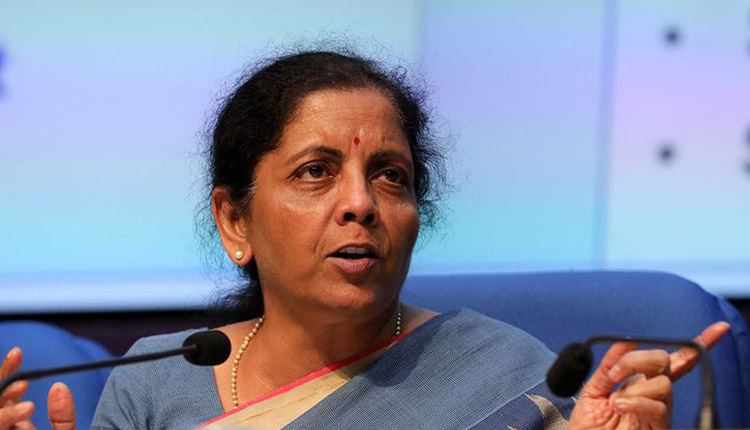India is merging its state-run banks to form fewer and stronger lenders, as Prime Minister Narendra Modi looks to boost credit and revive economic growth from a five-year low.
Punjab National Bank, Oriental Bank of Commerce and United Bank of India will combine to form the nation’s second-largest lender, Finance Minister Nirmala Sitharaman said at a briefing in New Delhi on Friday.
Canara Bank will join Syndicate Bank; Union Bank of India will be merged with Andhra Bank and Corporation Bank; and Indian Bank with Allahabad Bank. Together, they will hold business worth 55.8 trillion rupees ($781 billion)
The mergers, which cut to 12 the total number of state-owned banks, from 27 in 2017, are the first since Prime Minister Narendra Modi’s government won re-election in May. His government has vowed to clean up the banking sector and reduce the number of state-run banks.
News of the mergers comes minutes before official data is expected to confirm a fifth-straight quarter of slowing economic growth. Soured debt of about $130 billion, much of it on the books of state-run banks, had been curbing fresh lending, restricting scope for a revival in investment.
Last year, government helped facilitate a merger of Dena Bank and Vijaya Bank with Bank of Baroda, creating the third-largest bank by loans in the country.
Four new lenders that result from the mergers will hold business worth 55.8 trillion rupees ($781 billion), or about 56% of the Indian banking industry, Finance Minister Nirmala Sitharaman said at a briefing in New Delhi on Friday. The government will inject a combined 552.5 billion rupees of capital into these entities, she said.
“Banks with strong national presence and global reach is what we want,” Sitharaman said. “Scaling up will only allow them to have lot more resources and therefore the lending cost can come down.”
News of the mergers comes minutes before official data is expected to confirm a fifth-straight quarter of slowing economic growth. Soured debt of about $130 billion, much of it on the books of state-run banks, had been curbing fresh lending, restricting scope for a revival in investment.
India will now have 12 state-run banks instead of 27.
The government will ensure that no bank employee is hurt by the decisions, Finance Secretary Rajiv Kumar said at the briefing. He added that no one lost their job when the government helped facilitate a merger of Dena Bank and Vijaya Bank with Bank of Baroda last year, creating the third-largest bank by loans in the country.
The 10-member S&P BSE Bankex index rose 0.6% in Mumbai on Friday before the decisions were announced, compared with a 0.7% gain in the benchmark gauge.
“Just increasing the size of balance sheets and combining operations of banks will only reduce the number of state-owned lenders but asset quality stress is unlikely to be taken care of,” said Avinash Gorakshakar, head of research at Joindre Capital Services Ltd. in Mumbai. “The bigger issue still remains as how risk profiling would improve banks’ bad-loan ratio ahead.”
India’s state banks last week pledged that they would pass on all policy-rate cuts to their customers, which means Indian borrowers would benefit from the most aggressive monetary easing in Asia this year.
In a spate of announcements within the space of a week, the government has eased foreign investment rules and given concessions on vehicle purchases. It also secured more fiscal space to stimulate the economy with a windfall from the central bank in excess of $24 billion.
Data due later on Friday is expected to show gross domestic product growth slowed for a fifth straight quarter to 5.7% in the three months ended June. That’s slower than the 5.8% expansion in the previous quarter.
Source: Gulf News


